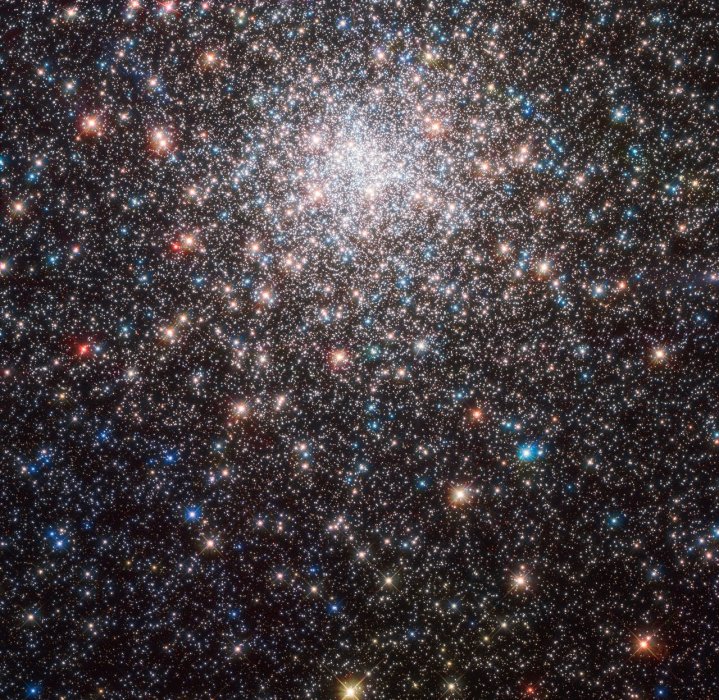
The Hubble Space Telescope captures no end of wonders, from images of two colliding galaxies to the brightest quasar ever discovered. This week, the wonder on display is the globular cluster of Messier 28, shining in all its glory.
Messier 28 is a group of tens of thousands stars in the constellation of Sagittarius, located 18,000 light-years from our planet. As a global cluster, it is a collection of stars that is tightly bound together by gravity and which orbits around a galactic core. Because the gravity is so strong, the stars are pulled into a spherical configuration with a high degree of density, which explains why there are so many points of light in Hubble’s image.
In total the global cluster has a mass that is 551,000 times the mass of the Sun and is 12 billion years old. It is notable for containing astronomical features such as 17 RR Lyrae variable stars which pulse with light and which can be used to estimate distances between stars. This made these types of stars a vital tool for early astronomers to gauge how far away certain stellar objects were.
As implied by the name, Messier 28 was classified by astronomer Charles Messier who added it to his catalogue of objects in 1764. However, he incorrectly believed that the cluster was a nebula, or a glowing cloud of dust and gas. Because telescopes of the time were very limited, many objects could only be seen as hazy light sources and were assumed to be nebulae.
Messier described it as a “Nebula discovered in the upper part of the bow of Sagittarius at about one degree from the star Lambda & little distant from the beautiful nebula which is between the head and the bow. It contains no star; it is round, it can only be seen difficultly with an ordinary telescope of 3.5-foot.”
Even using commercially available binoculars today, Messier 28 is only be faintly visible due to the distortion of light created by Earth’s atmosphere. To capture this gorgeous and detailed image required a space-based telescope like Hubble which can detect light without distortion of the atmosphere.
Editors' Recommendations
- Hubble peered through dust and gas to capture this dazzling globular cluster
- Hubble’s 30th anniversary image is a stunning depiction of star birth
- Hubble scientists find new way to measure the age of star clusters




